Top speeds on the rails - aerodynamics in the ICE3
![[Translate to English:] Teaserbild zum Blog 097 - Aerodynamik beim ICE3 [Translate to English:] Teaserbild zum Blog 097 - Aerodynamik beim ICE3](/fileadmin/_processed_/e/f/csm_Teaserblog_097_Zug_ICE3_644eb3b01a.jpg)
When it went into service in 2000, the ICE 3 set new standards in German rail transport with a regular top speed of up to 300 kilometres per hour, making it currently Germany's fastest train.
Its performance can be seen particularly on the ICE lines, e.g. the high-speed route Cologne - Rhine/Main. The ICE 3 is a real multiple-unit train and, unlike its predecessors, no longer has power cars with eight carriages, but instead has a drive distributed over several carriages. This enables it to cope effortlessly with gradients of 40 per thousand.
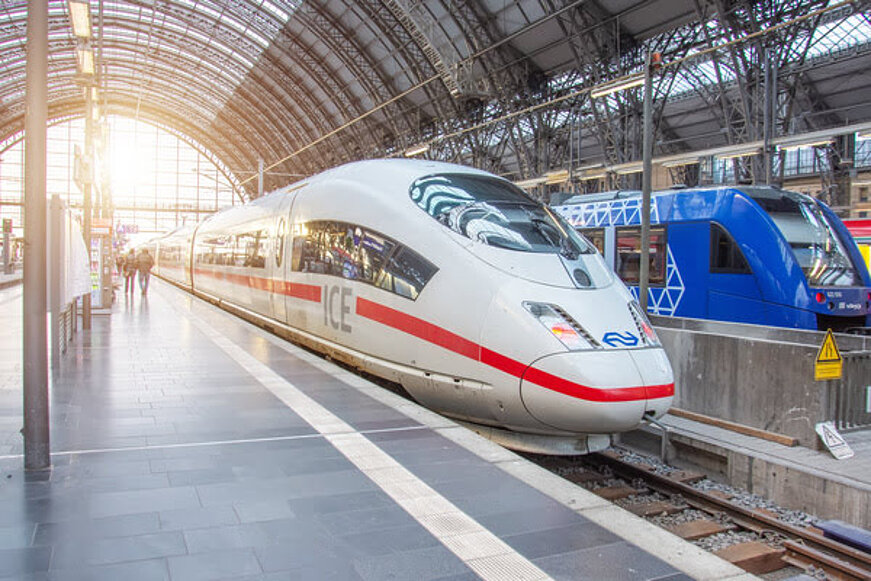
At these high speeds, the aerodynamic behaviour of the ICE, but also the acoustics in particular, are becoming increasingly important.
CFD flow simulations help to identify and optimise any remaining weak points in the flow of an ICE. Due to the dimensions and the details to be resolved, one very quickly ends up here with model sizes that require a corresponding computing capacity, which Merkle & Partner naturally has in-house.
In addition to running on open track, the behaviour when an ICE enters tunnels is also of great interest, as are the suction forces that occur next to the track, but also when two trains pass each other.
The current collectors, the so-called pantographs, are just as much potential noise sources as wheel housings.
The results of the CFD model calculated at Merkle & Partner show the ICE at its maximum speed of 300 km/h travelling in a straight line.
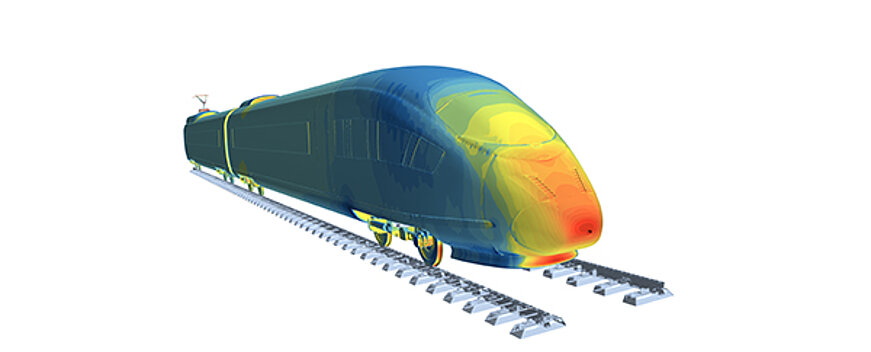
The following pictures show the flow conditions around the train.

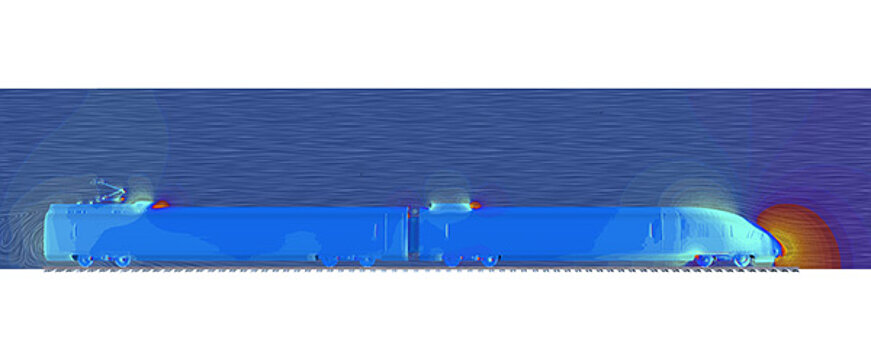
The following pictures show the results in detailed views.
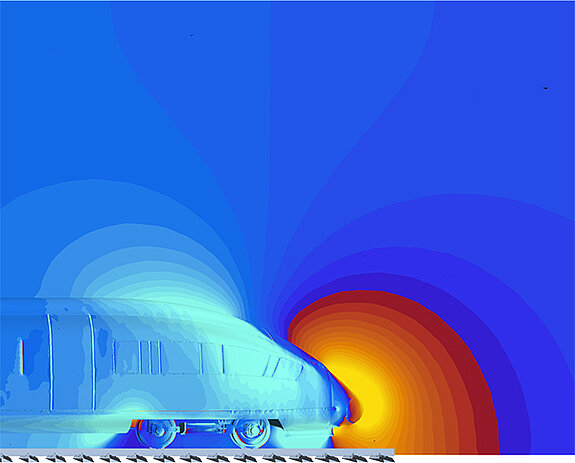
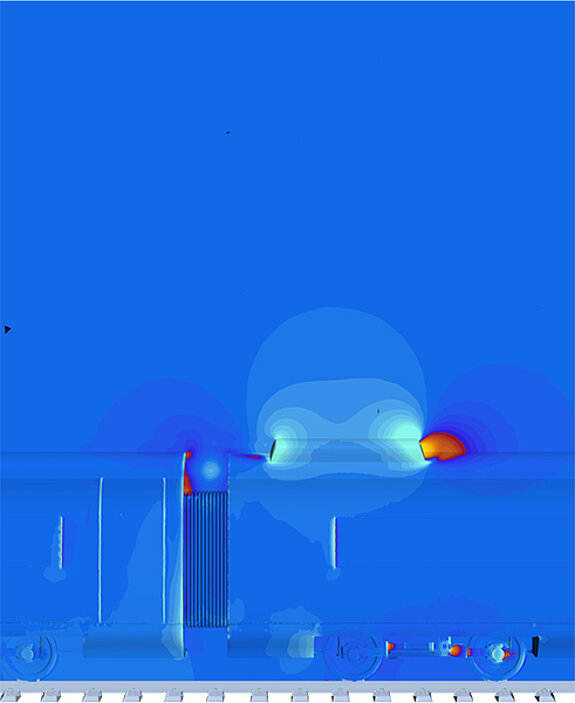
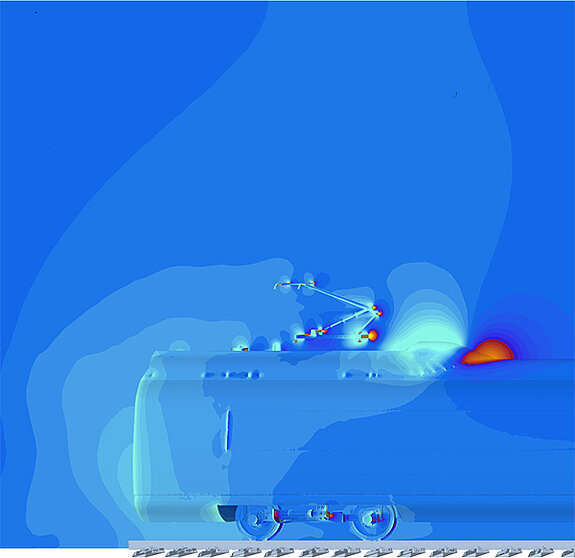
Potential aeroacoustic noise sources can be found at the points where detachment areas and vortices appear.
With dimensions of 4 m high, 3 m wide and up to 200 m long, models like those of an ICE are among our larger CFD flow models. Depending on how precisely certain areas are to be resolved and what the objective is, the model sizes reach several hundred million cells.
But as in real life, it is not the length that is decisive, but rather the technology 😊.
If you are curious about what else can be calculated, we will be happy to advise you without obligation.
My contact person for CFD fluid mechanics is my division manager Chadi Serhan.
Yours Stefan Merkle

PS: Speaking of fluid mechanics and CFD: The air-conditioning on German railway trains has probably reached its limits more often this summer. Here, too, we are happy to help. Keyword interior air conditioning!
PSS: Pantographs, bogies, wagons and everything else that is attached to a train also have a strength-related side in addition to the fluid-mechanical side, which we can also handle, in this case via FEM. But more about this in another blog.
PPPS: 300 km/h per hour is quite nice, but the French have trains with 320 km/h! Just as a suggestion, since we didn't get the Transrapid on the rails in this country. According to Chinese information, modern Transrapid trains are to travel between the megacities of Guangzhou and Wuhan at a speed of 600 km/h initially.